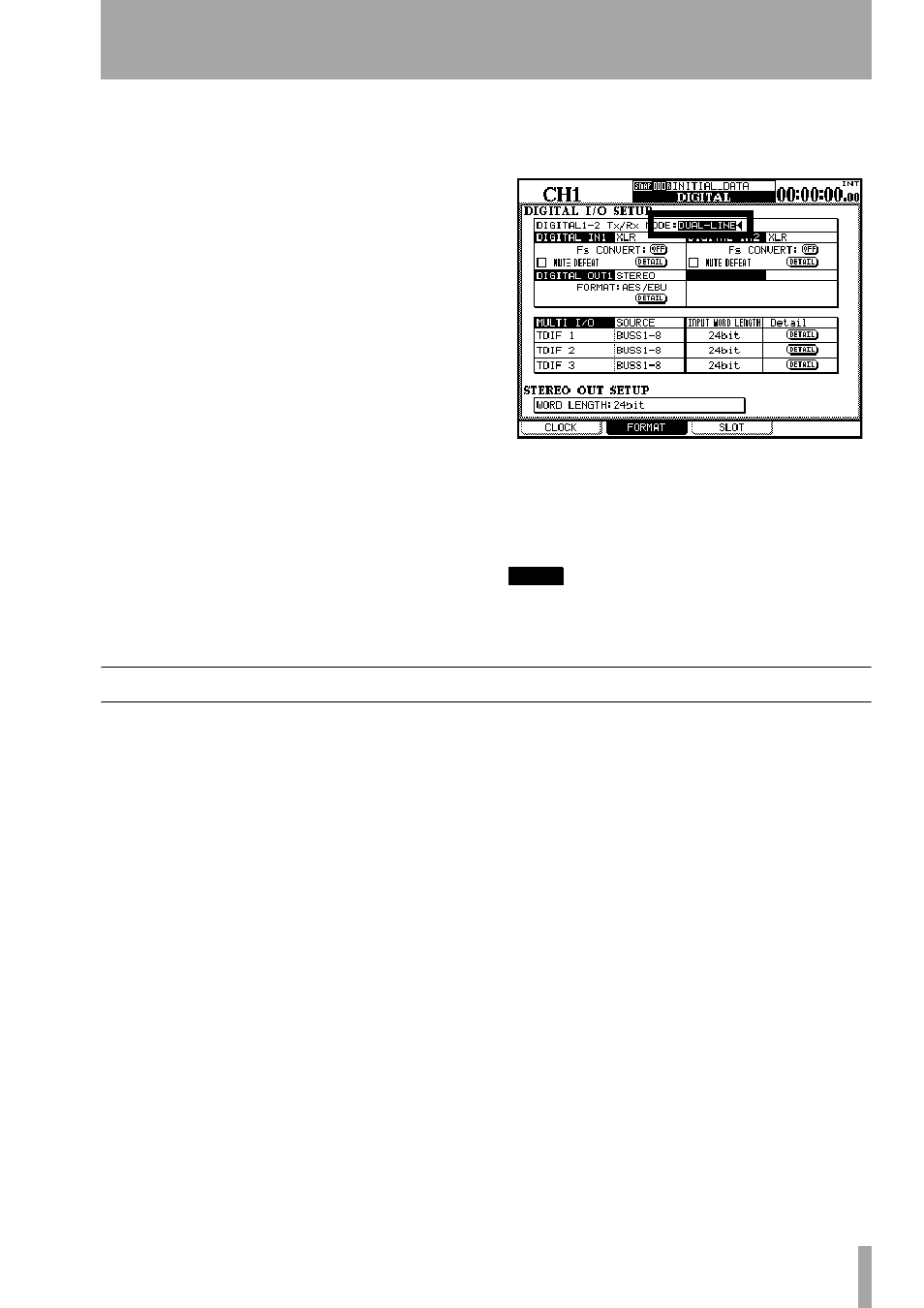Channels, etc, 15 – high sampling frequency—channels, etc – Teac DM-24 User Manual
Page 113

15 – High sampling frequency—Channels, etc.
TASCAM DM-24 Reference Manual
113
DUAL-LINE
is a “parallel” method, in which a pair of
AES/EBU cables send two channels of high sam-
pling frequency audio data.
HIGH-SPEED
uses one AES/EBU cable to send two
channels of audio data at twice the standard data rate.
In this screen, the output format of the four AES/
EBU input streams available to the DM-24 can be
selected to be either high-speed or dual-line, depend-
ing on the capabilities of the other equipment con-
nected to the DM-24.
This choice also applies to devices connected to the
DIGITAL IN
and
DIGITAL OUT
ports of the DM-24,
as shown here.
The high sampling frequency format of
DIGITAL IN
and
OUT
1
and
2
must be altered together (they can-
not be set independently) and the
MODE
choice (at the
top of the screen, highlighted here) is either
NORMAL
,
DUAL-LINE
or
HIGH-SPEED
.
NOTE
These settings can also be made in normal sampling fre-
quency mode, but the frequency conversion must be set
to in for this to apply.
Channels, etc.
When high sampling frequency has been selected,
the number of channels available is halved, from 32
to 16.
The first sixteen physical faders 1 through 16 are
used for this purpose. The fader layer 17-32 has no
meaning in the high sampling-frequency mode.
Twelve channels are available for mic/line input, and
a further four for channel input.
The number of aux sends is also reduced, from 6 to 4.
However, the number of busses is unchanged at 8.
Also note that the number of AES/EBU channels
available on any installed slot cards is now halved.
The number of onboard compressors and dynamics
processors, etc. is also reduced.
However, the functionality of the components that
make up the modules (EQ, etc.) is not impaired or
reduced.
